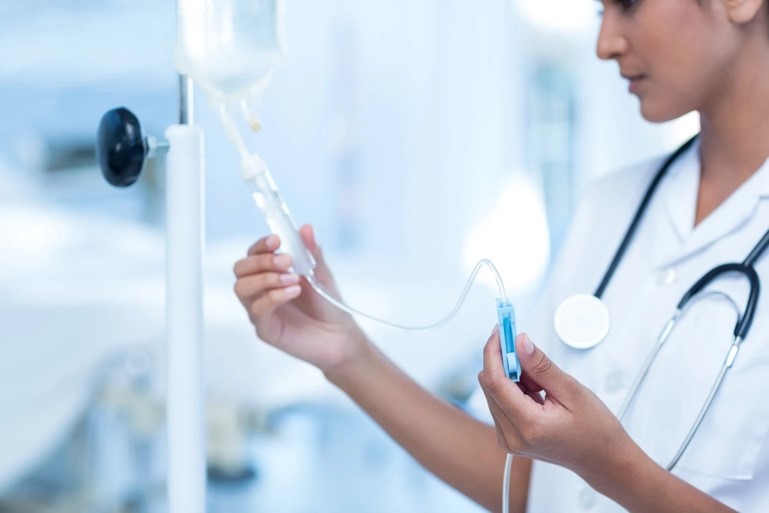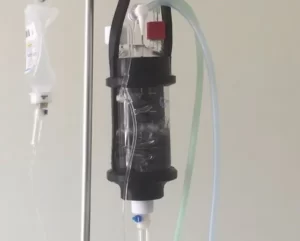OZONE THERAPY
Ozone therapy is a form of integrative medicine that involves administering ozone gas (O3) to the body for therapeutic purposes. Ozone is a molecule composed of three oxygen atoms, and it is known for its powerful oxidizing properties.
Ozone therapy has been used and extensively studied for many decades, actually for more than a century. It is delivered in a low concentration combined with oxygen (usually about 2 to 5 percent ozone and 95 to 98 percent oxygen , often called oxygen-ozone therapy. When administrated; ozone produces downstream compounds called ozonides that kills microbes and viruses, modulate the immune system, reduce inflammation, improve red blood cells pliability, destroys free radicals, enhance mitochondrial function.

Ozone therapy is promoted in the context of anti-aging medicine for its potential to enhance cellular function and improve overall vitality. The claims regarding its anti-aging benefits generally focus on its supposed ability to improve oxygen utilization, boost immune function, and reduce oxidative stress. Here’s a closer look at how ozone therapy is purported to work in anti-aging and the current understanding of its effectiveness:
Mechanisms of Action in Anti-Aging
1. Improved Oxygen Utilization:
Ozone therapy is said to increase the oxygen-carrying capacity of the blood, thereby enhancing tissue oxygenation. Better oxygenation can improve cellular metabolism and function, which might contribute to reduced signs of aging.
2. Immune System Modulation:
Ozone is believed to stimulate the immune system, potentially improving the body’s ability to fight infections and reduce chronic inflammation, which is often associated with aging and age-related diseases.
3. Reduction of Oxidative Stress:
By modulating oxidative stress through controlled oxidation, ozone therapy is thought to enhance the body’s antioxidant defense mechanisms. This could potentially mitigate damage from free radicals, which are implicated in the aging process.
4. Enhanced Cellular Energy Production:
Ozone therapy is claimed to increase the efficiency of the mitochondria, the energy-producing components of cells, which may lead to better energy levels and overall cellular health.
Potential Benefits of Ozone Therapy
Regulates cellular oxidative stress contributing to strengthen antioxidant factors and to fight free radicals excess.
Triggers an increase in O2 metabolism in the case of tissue hypoxia.
Modulates the auto immune activity. Ozone can activate the production of cytokines (interferon, tumor necrosis factor, interleukins, etc.) from monocytes and lymphocytes in the peripheral blood. These activated blood cells are taken up by the lymphoid tissue (spleen, bone marrow and lymph nodes) where the release of the cytokines produces a modulation of the immune system. These cellular interactions are very similar to the physiological processes that occur in the body to keep the immune system in an active state.
It has a high bactericidal and germicidal power. The germicidal action of ozone is based on the formation of toxic molecules such as hydrogen peroxide, and very toxic free radicals (such as superoxide), which are especially toxic for anaerobic microorganisms, since they lack endogenous enzymatic systems capable of breaking down these products and eliminate them from the body, virus, bacteria, and fungus.
It is a circulatory activator. After treatment with ozone, blood improves its ability to circulate through the narrower microcapillaries, thus improving microcirculation by platelet breakdown.
Improves cellular oxygenation. Disaggregated and softened erythrocytes are in better conditions to absorb and transfer oxygen, among other factors, due to the greater free contact surface and deformability. The arterial oxygen pressure increases and the venous oxygen pressure decreases
It is a powerful analgesic and anti-inflammatory. It has the same effects as a corticoid, but without the side effects of it.
It is a stimulator of tissue regeneration.
Diseases susceptible to be treated with medical ozone as adjuvant
Diabetes
Infected ulcers of torpid evolution or difficult healing, such as diabetic foot and ulcers in diabetics.
Burns and abscesses.
Cardiovascular disease, Peripheral vascular disease.
Neurodegenerative diseases (senile dementia, Alzheimer’s, Parkinson’s, etc.).
Joint inflammations in orthopedics and rheumatology (fibromyalgia, chronic fatigue). Herniated discs. Tendinitis, tendinosis.
Gynecology: in vulvovaginitis and vaginitis of fungal or mycotic origin.
Geriatrics: increase quality of life and cerebral oxygenation in symptoms such as memory loss, circulatory difficulty in legs, tiredness.
Coadjutant in oncological treatments.
General activator of the immune system.
Pathologies of viral origin, such as hepatitis and herpes, and Covid 19
OZONE APLICATIONS
Ozonated saline solution SSO3 intravenously
SSO3 is a modern form of intravenous application of Ozone (O3), the ozonated saline solution is obtained by means of an ozone generator, which produces gaseous ozone from the oxygen present in the air. This gas is introduced into a 0.9% saline solution, thus generating the ozonated saline solution SSO3.
Ozonized Saline Solution (SSO3 ) is a widespread practice in Russia and was developed by the Russian school of ozone therapy in the city of Nizhny Novgorod (Volga Federal District).”It has begun to be implemented quite successfully in recent decades in several countries outside of Russia.
Ozonized Saline Solution is an application recommended by the Madrid Declaration on Ozone Therapy. Point 3.1.3
https://isco3.org/madrid-declaration-on-ozone-therapy-3rd-edition-isco3/
SSO3 is a mixture of salt and water (0.9% saline solution to which gaseous ozone has been added. Ozone is a chemical compound formed by three oxygen atoms (O3) and is known to have disinfectant, deodorant and oxidants. The ozone present in the saline solution has the ability to destroy bacteria, fungi and other pathogenic microorganisms, which makes it useful in the treatment of infections, being for this reason very popular both in Covid and post-Covid, achieving great effectiveness. reduce its consequences, and also has the effect of promoting rapid healing. Its effectiveness in reducing pain and inflammation has been investigated.
It is important to note that the use of ozonated saline solution must be carried out under the supervision of a properly trained and certified doctor.
Techniques accepted by the majority of specialists and Associations in Ozone Therapy
- Major autohemotherapy / EBOO
- Minor autohemotherapy:
- Rectal insufflation:
- Vaginal insufflation:
- Intradermal injection:
- Intramuscular injection:
- Intra-articular injection :
- Peri-articular injection:
- Intradiscal injection:
Mechanisms of Action in Anti-Aging
Patients suffering from a significant deficiency of glucose 6-phosphate dehydrogenase (Favism). These should not receive this treatment, since oxidation of the red blood cells could occur, causing hemolysis, since they do not have protective systems against oxidation.
Severe anemia.
PRECAUTIONS
In some abnormal situations (decompensation) is avoided in patients with hyperthyroidism and thrombocytopenia, severe cardio-vascular instability (blockade, Wolff-Parkinson-White Syndrome), in convulsive states and in hemorrhagic conditions.
Administration and Dosage: Proper administration and dosing are crucial.
Professional Supervision: Ozone therapy in BMC Clinic is performed by qualified healthcare professionals trained in its use to minimize risks.

